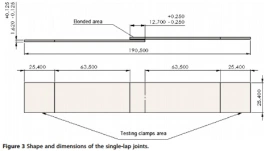 A new case study on Sciencdirect.com. This article was published in « Case Studies in Engineering Failure Analysis » of april 2015.
A new case study on Sciencdirect.com. This article was published in « Case Studies in Engineering Failure Analysis » of april 2015.
Premature Failure of EPRI recommended nickel based filler for Dissimilar Metal welds (DMW) such as in the present study has been investigated to determine the root causes. The mechanism involved a creep stage I process on the alloy steel side due to improper PWHT leading to undesirable carbides precipitation increasing the hardness. Therefore, the sensitivity of the welding to micro-cracking combined to bending stresses involvement induced a premature failure within short time of operation.
Read more at : Premature Failure of Dissimilar Metal Weld Joint


 The Leak-Before-Break (LBB) concept has an effect on the safety design of Fast Breeder Reactors (FBRs), and thus its assessment has been one of the most significant issues. In the case of a commercial-scale FBR, since the main loads are the thermal expansion and thermal transient stresses, ferrite steel with a low thermal expansion rate has been a candidate material. A conventional LBB assessment method is insufficient to consider these characteristics, thus an advanced method is required.
The Leak-Before-Break (LBB) concept has an effect on the safety design of Fast Breeder Reactors (FBRs), and thus its assessment has been one of the most significant issues. In the case of a commercial-scale FBR, since the main loads are the thermal expansion and thermal transient stresses, ferrite steel with a low thermal expansion rate has been a candidate material. A conventional LBB assessment method is insufficient to consider these characteristics, thus an advanced method is required. Afin d’optimiser le fonctionnement et l’entretien des turbines à gaz, il est nécessaire de mieux comprendre le résiduel de vie en fluage du disque de turbine (à l’interface disque-pied de sapin). L’instrument proposé dans l’article paru dans
Afin d’optimiser le fonctionnement et l’entretien des turbines à gaz, il est nécessaire de mieux comprendre le résiduel de vie en fluage du disque de turbine (à l’interface disque-pied de sapin). L’instrument proposé dans l’article paru dans